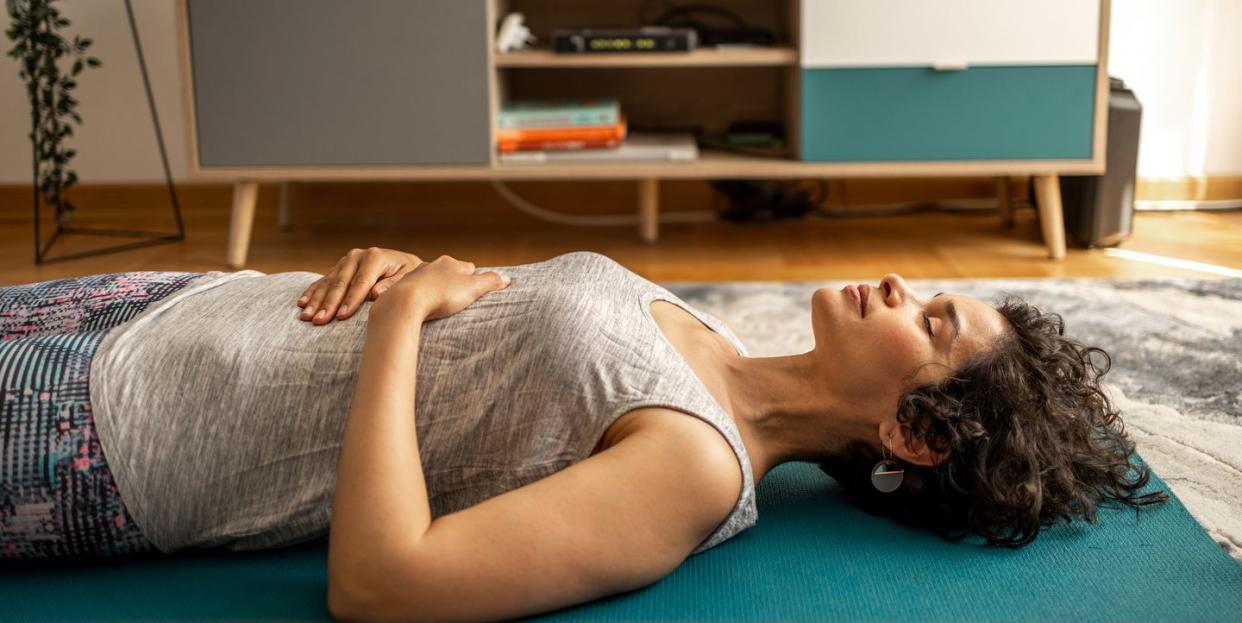How to Protect Your Home’s Air Quality Through Every Season

There’s no place like home — nowhere more comforting, special, and deserving of protection from outside irritants. But if you can’t seem to get rid of springtime allergies or winter germs, for example, your home’s air quality may be to blame.
Fortunately, today’s HVAC equipment (that’s short for “heating, ventilation and air conditioning”) makes it easier than ever to reduce the number of airborne pollutants in the home. “Not only that, the latest equipment is so much more efficient, so if you’re upgrading a 20-year-old furnace or central AC system, your energy costs will go way down,” says Dan DiClerico, Director of Home Improvement & Outdoors at the Good Housekeeping Institute.
We checked in with DiClerico and his colleagues at the Institute, as well as industry experts at Trane Residential, a leading manufacturer of HVAC systems, air cleaners and more, to learn the latest strategies for breathing easily at home throughout the year.
Remove the winter germs
If you live in a climate where temperatures drop in the winter months, you’re likely spending more time inside with the windows shut tight. While that might keep you cozy, it also gives cold and flu germs a chance to thrive.
A 2021 study, funded by the National Science Foundation, found that viruses like COVID-19, influenza, and the common cold are transmitted by aerosol droplets much smaller than scientists once thought — meaning someone doesn’t have to be sneezing or heavily coughing to spread germs. That, in turn, might explain why even a quick visit from a friend battling a cold can turn into a days-long bout of illness for the whole family.
Though more research is needed to fully understand the transmission of COVID-19, adding a whole-home air cleaning device can help minimize germs in your home’s air. “These advanced filtration systems are permanently installed inside the home’s ductwork where they use a combination of technologies to zap airborne germs, viruses and VOCs,” explains DiClerico. For example, the Trane CleanEffects? Whole Home Air Cleaner — which is certified as asthma and allergy friendly by the Asthma and Allergy Foundation of America — is proven to remove 99.98% of airborne pollutants as small as 0.3 microns (that includes as mold spores, allergens, bacteria, and even some pollen). For comparison, that makes it up to 100 times more effective than a standard 1-inch filter, according to Trane.
Close your door to springtime allergies
Spring cleaning is a time-honored tradition, but it might exacerbate allergies and asthma by stirring up pet dander, dust mites and other irritants that have been dormant on your home’s surfaces and in its air. According to the American College of Allergy, Asthma, and Immunology, more than 50 million people experience allergies each year when irritants like pollen and dander enter the body. The immune system mistakenly identifies them as a threat, causing unpleasant symptoms like dry eyes, sneezing, coughing and skin irritation.
Medical experts recommend keeping windows closed on high pollen count days — even though the weather can be extra inviting. Since this closed-window policy robs the home of natural ventilation, mechanical fresh air systems are used to fill the gap. The Trane Energy Recovery Ventilator goes one step further by also banishing strong odors and chemical vapors. “The balanced fresh air system also manages the transfer of heat and moisture between incoming and outgoing airstreams,” says DiClerico. “In the winter, warm indoor air heats up cold incoming air, while in the summer the opposite happens. That saves energy, while also helping to maintain optimal humidity levels throughout the year.”
Keep out summer pollution
If there’s anything better than coming home to an already-cool house, it’s knowing that your air conditioner is also helping you breathe easier. If you’ve ever heard people talk about “holes in the ozone layer,” they’re referring to ground-level ozone: a harmful gas emitted by cars, power plants, and refineries, for example, that gets even more dangerous to humans, animals, and plants in the summer heat. According to the EPA, this can make it more difficult to breathe deeply, aggravate lung diseases like asthma, emphysema and chronic bronchitis and damage airways.
A Trane central AC system can make your home safer during these hot days by allowing you to block out the ozone-heavy summer heat. Pairing the system with a Trane CleanEffects? Whole Home Air Cleaner, mentioned above, will help even more.
DiClerico also recommends upgrading to a smart thermostat if you haven’t yet. “It will save money by automatically raising the AC when you’re asleep or away,” he says. The latest smart thermostats, like Trane’s ComfortLink II XL1050, can even send real-time information to your service provider (with your approval, of course), allowing them to monitor the health of the equipment. Through the Trane Home App, you can even integrate an indoor air quality monitor into the system to check for harmful levels of smoke, dust, carbon dioxide, and more.
Steady your fall humidity levels
As the back-to-school season starts and the air temperatures begin to cool, humidity also starts to dissipate. While this might feel good, it’s important to have a balance of dry and moist air to prevent common germs and viruses from spreading in your home.
Medical experts recommend keeping your home’s relative humidity between 30 and 50 percent for maximum health and comfort. This range keeps respiratory irritants, like mold, at bay. Some research suggests that a slightly higher RH (40-60 percent) can slow the spread of COVID-19. So how can you ensure your air is balanced?
Trane humidifiers are designed to be installed in tandem with central HVAC systems and can constantly monitor and adjust humidity levels in homes of up to 4,200 square feet. This eliminates the need to buy, set up, and store portable humidifiers for different parts of the house.
You Might Also Like
